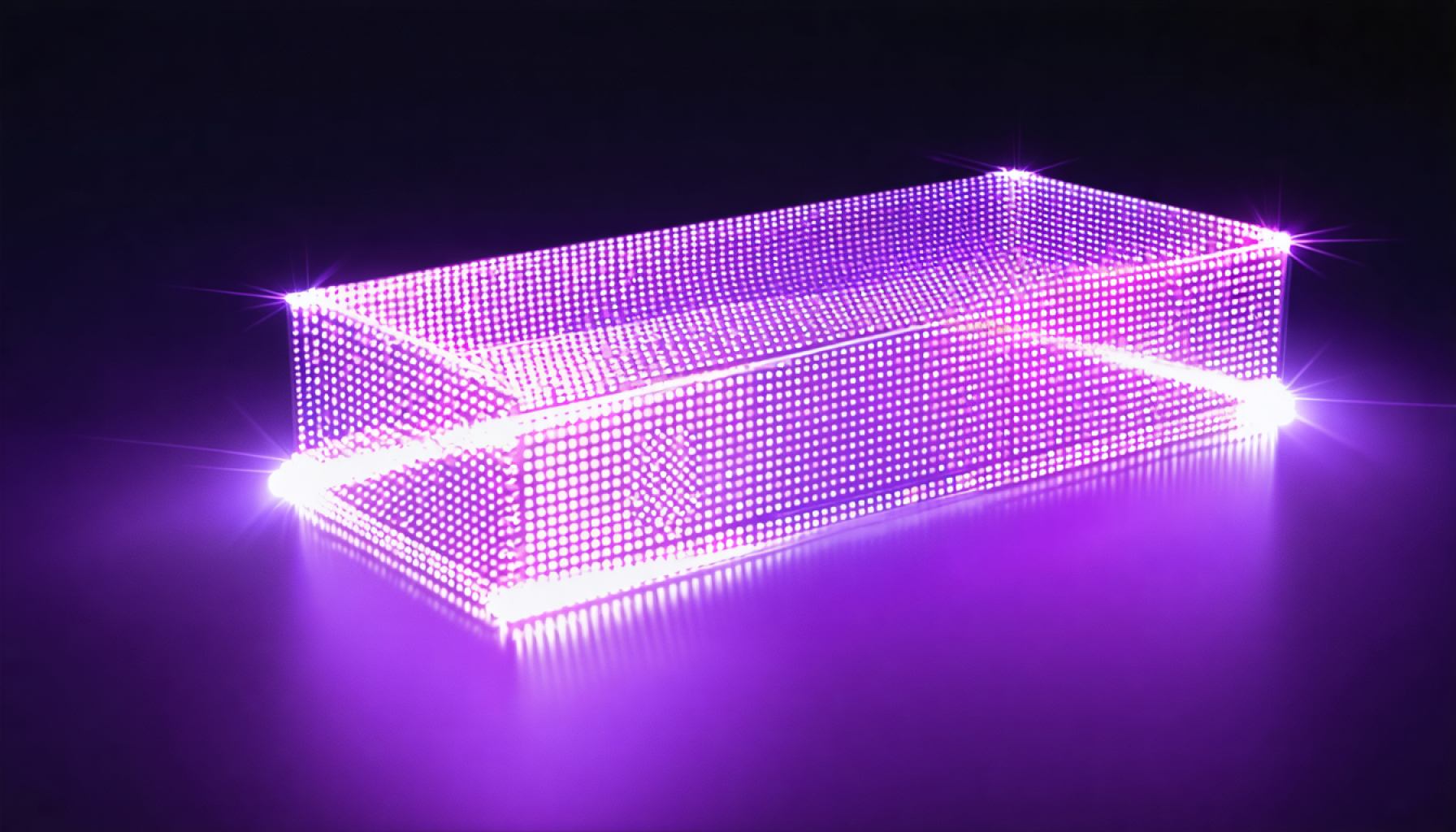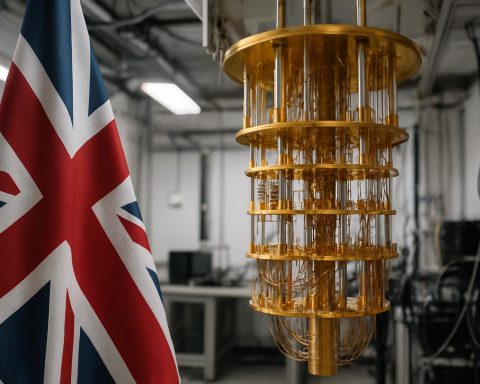- Silicon quantum dots offer a non-toxic, abundant alternative to traditional metal chalcogenide quantum dots in photonic technologies.
- These dots are versatile, finding applications in solar cells, lighting, and solar concentrators.
- Silicon quantum dots excel in photon upconversion, enhancing bioimaging and solar technology prospects.
- Potential uses in biotechnology, such as optogenetics and phototherapy, are expanding with ongoing research.
- Challenges include lower absorption at visible wavelengths and surface defects, yet solutions like organic molecule integration show promise.
- Continuous innovation and research are pivotal in unlocking the full potential of silicon quantum dot hybrid systems.
https://youtube.com/watch?v=pvFcJ1bdXIw
Against the vibrant backdrop of modern technology, the shimmering allure of quantum dots shines ever brightly. Yet, traditional quantum dots—crafted from metal chalcogenides—pose an ominous shadow over their own brilliance due to their inherent toxicity. Enter the unassuming hero: silicon. Abundant in nature, non-toxic, and radiant across a broad photoluminescence spectrum, silicon quantum dot hybrid systems are poised to redefine the landscape of photonic technologies.
In an era dominated by innovation, these silicon marvels find homes in an array of applications, serving as crucial components in solar cells, lighting solutions, and even solar concentrators. Yet, the transformative potential of silicon quantum dots truly glows in the realm of photon upconversion. This captivating process, which elevates two low-energy photons to forge a singular, high-energy photon, opens new vistas in high-resolution bioimaging and next-generation solar tech.
Moreover, the prospect of deploying silicon quantum dots in biological arenas kindles scientific imaginations. Harnessing their potential in optogenetics and phototherapy, these dots could one day power cutting-edge methods for detecting oxygen in artificial tissue scaffolds—heralding a new age of biocompatible innovations.
Despite their promise, the journey of silicon quantum dots is not without its hurdles. Their absorption coefficient at visible wavelengths lags, and the surface defects, like dangling bonds, present significant challenges. Yet, the resolve to overcome these obstacles is palpable. Ingenious strategies are proposed, including the integration of organic molecules to enhance light absorption.
The saga of silicon quantum dot hybrid systems is one of untapped potential waiting to be unlocked. With relentless research and a spirit of innovation, these tiny luminescent wonders could very well illuminate a future teeming with possibilities, transforming theoretical marvels into tangible realities. The dance of light continues, and in the heart of it all, silicon stands ready to redefine what’s possible.
Silicon Quantum Dots: The Beacon of Future Photonic Technologies
Unveiling the Power of Silicon Quantum Dots
Silicon quantum dots (SiQDs) are emerging as the sustainable and non-toxic alternative to traditional quantum dots made from heavy metal chalcogenides. Their unique properties, such as an abundant natural occurrence and a broad photoluminescence spectrum, position them at the forefront of photonic innovations.
How Silicon Quantum Dots Are Transforming Industries
1. Solar Energy Applications: Silicon quantum dots enhance the efficiency of solar cells significantly. By enabling the upconversion of photons, they can convert low-energy photon absorption—often lost in typical single-junction solar cells—into usable high-energy photons, thus boosting solar cell efficiency.
2. Advanced Lighting Technologies: The wide range of photoluminescent colors that SiQDs can emit make them ideal for LED lighting solutions, offering a spectrum of applications from residential lighting to sophisticated display technologies. They promise more vivid colors and improved energy efficiency.
3. Photon Upconversion: This involves the transformation of two low-energy photons into a single high-energy photon, with applications in next-gen solar tech and bioimaging. This process holds the potential to drastically improve the efficacy of solar panels and provide significant advancements in medical imaging techniques.
4. Biocompatible Innovations: In the realm of biology, silicon quantum dots are seen as future solution providers in optogenetics and phototherapy. Their biocompatibility allows them to be used in advanced medical applications, potentially revolutionizing treatments and diagnostics.
Addressing Challenges and Overcoming Limitations
Despite their promising potential, SiQDs face certain challenges:
– Absorption Coefficient: The absorption of visible light remains an area where improvement is needed. Researchers are exploring the integration of organic molecules to enhance absorption rates, paving the way for more efficient applications.
– Surface Defects: These include dangling bonds that can hinder performance. Strategies to passivate these defects are actively being researched to improve overall quantum efficiency.
Market Forecast and Industry Trends
The shift towards environmentally-friendly technologies is prompting increased investment in SiQD research. As industries strive for greener solutions, the demand for silicon-based quantum technologies is set to grow, particularly in solar energy and medical fields.
Real-World Use Cases
– Bioimaging: High-resolution imaging could vastly improve diagnosis and treatment protocols in the medical field.
– Solar Concentrators: SiQDs used in luminescent solar concentrators can increase energy capture efficiency, aiding in the development of more efficient solar power systems.
Security & Sustainability
Silicon quantum dots not only promise to replace toxic materials in technology but also provide a pathway to sustainable production and recycling due to their silicon base, which is one of the most abundant elements on Earth.
Insights & Predictions
The ongoing research and technological integration of SiQDs are expected to unveil expansive opportunities across various sectors. They are set to play a pivotal role in the transformation of energy and healthcare industries, among others.
Quick Tips for Innovative Applications
– Stay Updated: Keep an eye on the latest research and breakthroughs in SiQD technology to understand how they might apply to your industry or personal interests.
– Invest in Green Tech: Businesses should consider investing in SiQD technologies to stay ahead of the environmental curve and reduce dependency on toxic materials.
Conclusion
Silicon quantum dots are on the cusp of revolutionizing several fields, from energy to medicine. By unlocking their potential through concerted research and innovative applications, industries can harness their power to create a sustainable future.
Explore more about innovations and advancements in technology at Google.








